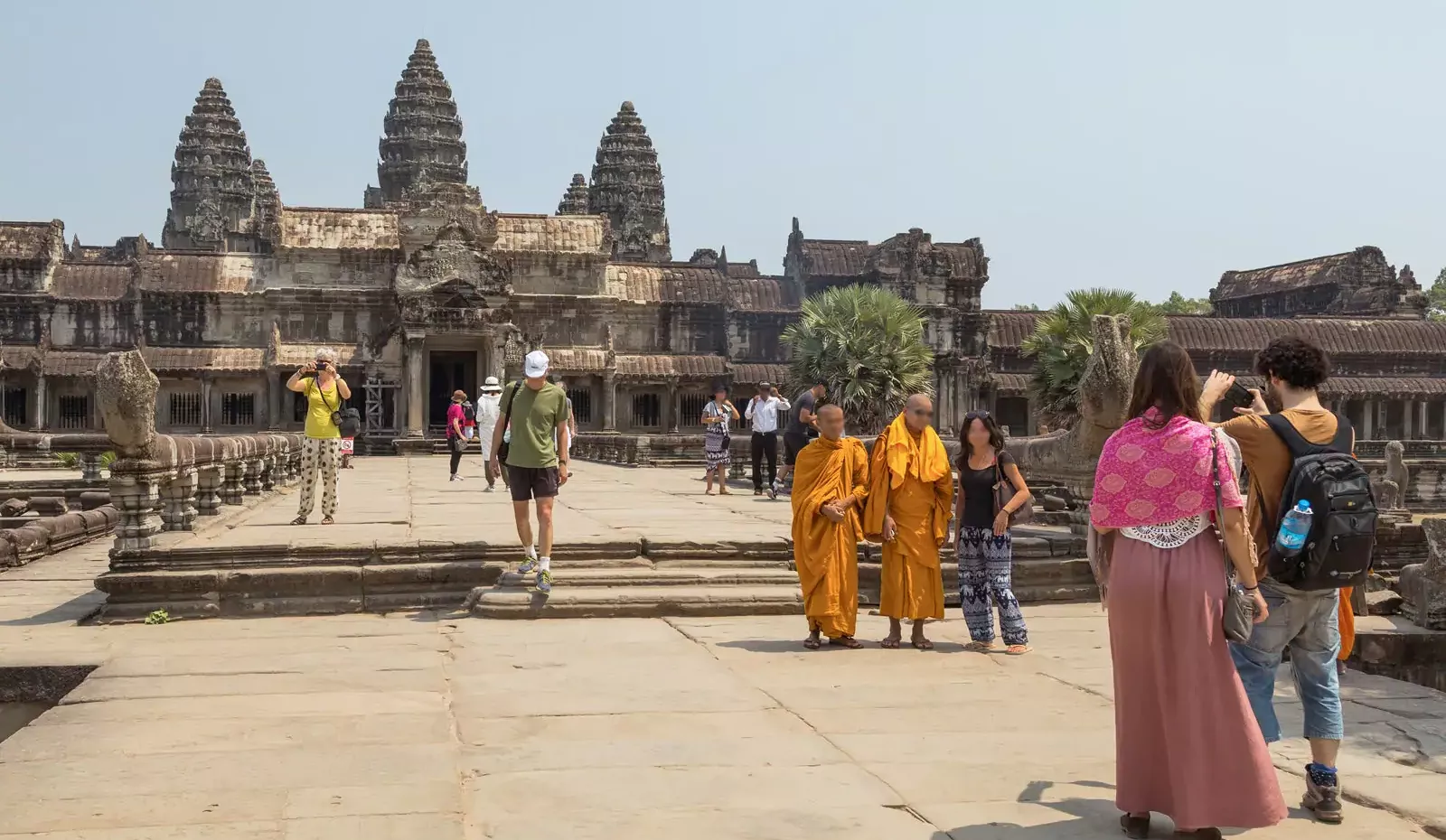
Khmer history is one of the most fascinating in the world and stretches from the ninth century to the modern-day constitutional monarchy we know today.
CAMBODIA: RECLAIMING RELICS
07/07/2020
Khmer history is one of the most fascinating in the world and stretches from the ninth century to the modern-day constitutional monarchy we know today, with no shortage of turbulence in between.
At the peak of the Khmer empire, it hosted the largest pre-industrial centre in the world, the power of which was manifested in the immense creations of famous temple complexes and stunning sandstone relics that are still awe-inspiring by modern standards and are architectural and artistic masterpieces.
There is no doubt the Khmer people were legendary builders, who aside from today’s tourist attractions also built an extensive infrastructure that included huge reservoirs, canals, road networks and bridges.
In fact, many historians today argue that the fall of the empire was due to the over extensive building projects undertaken by past rulers, which lead to a series of financial and ecological implications.
Not only did this result in the empire’s decline, but an unprecedented abandonment of temples and stonework creations, that millions of tourists stand in awe of today ensued, leaving them to be lost to the world for 500 years.

Above; Angkor Wat, around 2.2 million tourists visited the Angkor Archeological Park in Siem Reap in 2019, down 14.8 percent from the year before.
Fast forward to the 19th and 20th centuries and the rediscovery of these ancient relics sparked global interest, especially in the west.
Unfortunately, the latter paved the way for unscrupulous smugglers to capitalise on an ancient Khmer treasure market amid a state weakened and distracted by its own political infighting, leading to an unknown number of precious Khmer relics stolen away to a foreign land.
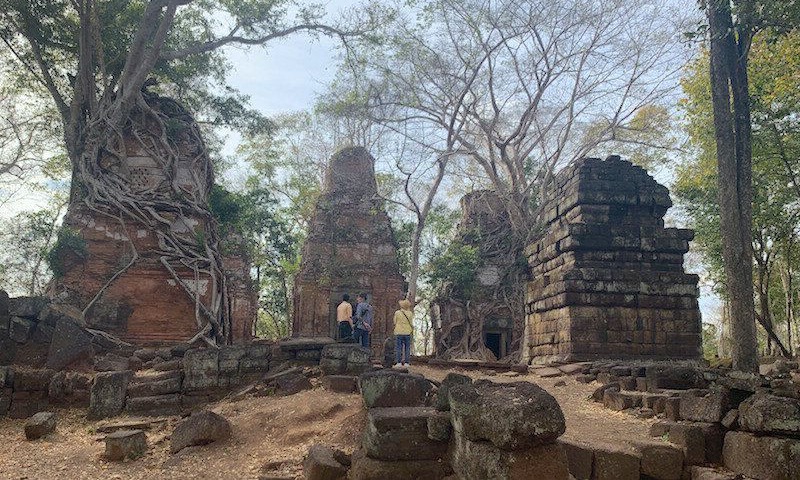
Above; Ancient ruins of Koh Ker, another city in the Khmer empire.
LOOTING IN ANGKOR
A stabilisation of Cambodia during the 1990s saw a series of reforms implemented to benefit both its social and financial reform, including a series of steps towards the reclamation of removed heritage.
In 1993, Unesco and the International Council of Museums issued the “Looting in Angkor, One Hundred Missing Objects” report, which listed at least some of the known stolen artifacts.
In the same year, Cambodia enshrined cultural heritage in law and three years later also implemented the Law on the Protection of Cultural Heritage.
The law, which still stands today, outlines the limited property rights applicable to cultural property, the way these rights can be used and the appropriate sanctions for violations of the law.
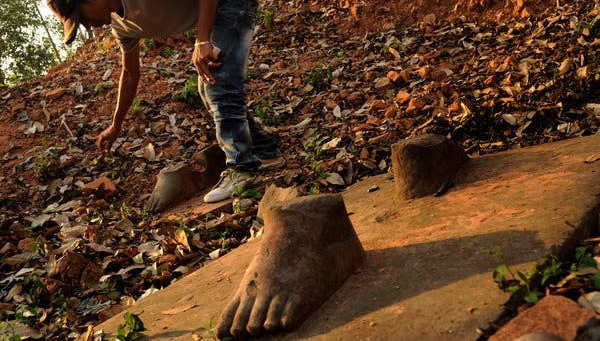
Above; The pedestal and feet belonging to a disputed thousand-year-old statue, The discovery was made in Koh Ker, 60 miles northeast of the Angkor Wat temple complex; Koh Ker, another city in the Khmer empire, was at one time a rival capital to Angkor, which was once the largest city in the preindustrial world.
STOLEN AND PLUNDERED ART
The complexity of the legal process surrounding supposedly stolen art is no better evidenced than in the case of the Khmer statue of Duryodhana, taken from Koh Ker in the 1970s, smuggled via Bangkok to the UK, sold to a Belgian prince and then consigned to a US auction house by his widowed wife in 2010.
Bangkok Post reported before trial: “To succeed in the case, the US government would need to show that Cambodia owned the statue and that it was taken from the country in violation of Cambodian law, or in a manner that would violate the laws of the US if the removal had taken place there.”
“For Sotheby’s [auction house] to prevail in the case, it would have to show that the owner did not know the removal from Cambodia was illegal. If the owner turned a “blind eye”, or was willfully blind, that would be tantamount to knowing the move was illegal,” it said.
Following lengthy legal battles, a decision was made on the bases that both parties agreed that further litigation would be burdensome since the case involved issues that concerned the laws of the different nations [United States, Cambodia, and the French colonies] and that the auction house didn’t want to risk losing the trial for fear of reputation, with the statue eventually being donated back to the Kingdom.
The statue, a sandstone masterwork with a catalog estimate of $2 million to $3 million, was pulled from auction at the last minute.
Clearly, this was and is the battle faced by Cambodia as it tries to reunite its rich heritage.
However, this case did manage to stir up both publicity for lost artefacts from the Kingdom that arguably created an international pressure, or “acts of goodwill”, from Khmer relic owners.
In fact, since 2016 to present, the Ministry of Culture and Fine Arts has reported that over 294 antiquities – mostly statues and jewelry – have been repatriated to Cambodia, of which 5 were made of sandstone, 165 of metal and 124 made from ceramic.

Above; US Ambassador Patrick Murphy second right and Minister of culture and fine arts second left taking part in a blessing ceromony for a return of a statue from the United States.
However, Minister of Culture and Fine arts Phoeurng Sackona says the return of artefacts is about much more than simply the return of lost artifacts.
“Getting Khmer antiquities back to Cambodia and its people are important for two main reasons,” she says.
“Firstly, Khmer artifact repatriation is a part of the psychological reconciliation of the Cambodian people who, after years of war lost loved ones, personal property and part of their heritage. Whether given through charity, by negotiation, court advocates or legal recapture, their return plays a vital role in fulfilling them. It is a symbol of the reunification of the souls of Khmer Ancestors separated from their home.”
“Secondly, it helps to fill in the missing gaps in academic research within the Kingdom, especially in the fields of humanities including history, archeology, language, religion and politics. It benefits everyone, both Khmer and other nationalities who want to learn about our culture,”Ms Sackona adds.
19-year-old student Lor Raksa, interviewed at the National Museum in Phnom Penh agrees.
“I don’t know much about what is missing still, but every time I see a piece of Khmer history return I am happy. I go to the museum as it is cheaper for locals and see pieces of our history and feel a stronger connection with my past,” she says.
Schoolmate, Pech Sopheak, agrees saying: “It has shown me the beauty of Cambodian heritage. In school, I saw the pyramids and the Great Wall of China and it made me wonder what Khmer culture has created. When I see what was made I feel proud.”
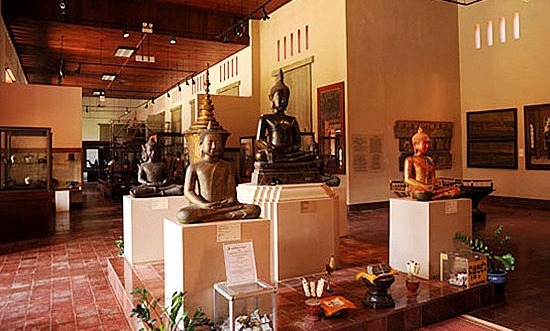
Above; Interior of the National Museum in Phnom Penh.
However, Ms Sackona also says that as well as repatriation being important for Cambodians and historians alike, it evidences the remarkable development of Cambodia and what it can achieve now as a unified and peaceful country.
“The returning of antiquities has shown the efforts of the government who has been working very hard to return Khmer relics and that Cambodia is now one of the countries capable of recovering their lost treasure,” she says.
Moreover, “the returning artifacts indicate the good relationship between the government and other countries across the world through meaningful cooperation,” she adds. “For instance, after the court case in the US concerning the Koh Ker Duryodhana, we have collaborated successfully with the US government to return many more Khmer relics. Equally, we have also cooperated with neighbouring countries such as Thailand, which saw the return of the impressive Banteay Chhmar base-reliefs which are now on display in the national museum.”
Ms Sackona says that figures surrounding antiquities still lost are ambiguous. The ministry continues to work with international partners and countries to investigate and return relics.
“We wish to appeal to anyone trading Khmer Art to stop and return the items. Any return of artifacts is a noble and exemplary action whereby donors not only illustrate their understanding of Khmer heritage but have contributed to the survival and revival of the nation’s soul,” she adds.

Above; Artifacts displayed before a handover ceremony at the National Museum in Phnom Penh, Cambodia, on July 5, 2019.
PHNOM PENH CAMBODIA
Millennium-old Cambodian artifacts displayed in a Japanese collector's home for two decades were returned to the Southeast Asian country's National Museum.
The 85 artifacts are mostly small bronze items and include statues of Buddha and the Hindu god Shiva, plus jars, ceramics and jewelry. Cambodia's Culture Ministry says some items were older than the Angkor era, which began about 800 A.D. Others date from the Angkor era or just after it ended in the late 14th century.
At an official reception for the artifacts, Prak Sonnara, secretary of state for the Culture and Fine Art Ministry, praised the Japanese collector for voluntarily returning the artifacts. He said her actions set a good sample for other countries and collectors to follow.
Cambodia has made intense efforts to recover artifacts looted during its civil war in the 1970s.
The collector, Fumiko Takakuwa, told reporters after the handover ceremony that she and her husband had bought the items in Japan and liked to collect and display them in their home. But she knew they were originally from Cambodia and that is why she returned them and was glad she did.
Prak Sonnara said the 85 items were believed to have been stolen from Cambodia's temples during the war, when intense looting occurred and valuables were smuggled through neighboring Thailand.
In 2014, three 1,000-year-old statues depicting Hindu mythology were welcomed home to Cambodia after being looted from a temple and put in Western art collections.
Also in 2013, two 10th century Cambodian stone statues displayed for nearly two decades at New York's Metropolitan Museum of Art were returned to their homeland in a high-profile case of allegedly looted artifacts.
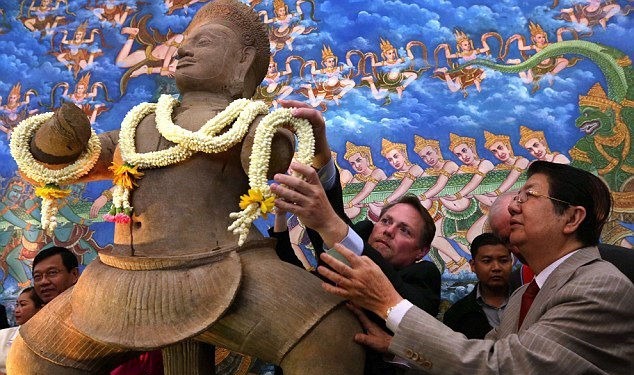
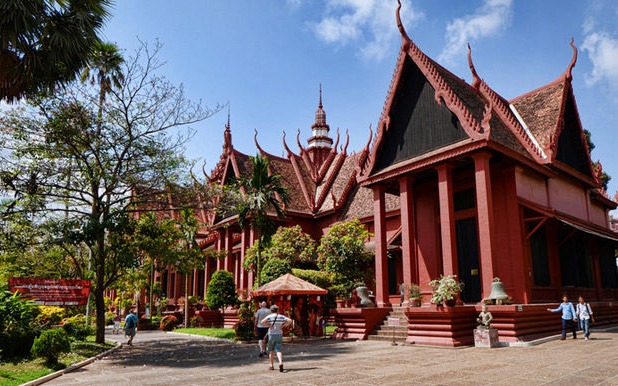
Avove; The National Museum in Phnom Penh, Preah Ang Eng Street 13, Phnom Penh, Cambodia, open daily from 8am-5pm.
MENZZOO MAGAZINE
July 2020
Useful Links;